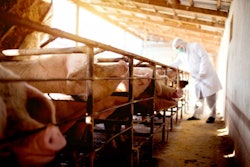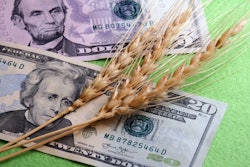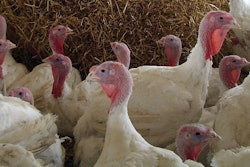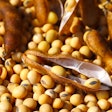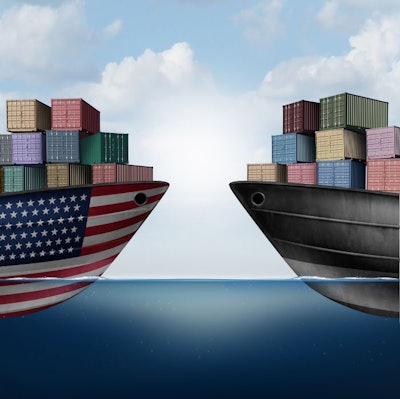
Jim Sumner, president of the USA Poultry and Egg Export Council, talks about the challenges and opportunities for US poultry
PODCAST: Trade expert has positive outlook for US poultry exports (10:20)
Ann Reus: Hello and welcome to the Feed Strategy podcast. I’m your host, Feed Strategy staff reporter Ann Reus.
Jim Sumner is the president and CEO of the USA Poultry and Egg Export Council. He will be a speaker at the 2021 Chicken Marketing Summit, where he will discuss export prospects for U.S. poultry as the industry and the country emerge from the COVID-19 pandemic and the global poultry industry adjusts to higher feed costs.
Jim joins me today to talk about some of the topics he will cover in his presentation at the Chicken Marketing Summit.
Hi Jim, thanks for being here.
Sumner: My pleasure.
Reus: We know China has been rebuilding its swine herd and trying to recover from African swine fever. How has that affected China’s demand for meat?
Sumner: It’s put a strenuous demand on meat, and it’s been a great opportunity for the U.S. chicken industry. The timing could not have been better. We had been out of the China market for five years. China blamed it on avian influenza. But, in actuality, we know it was because of some political issues because we had not approved China for exporting their poultry to the United States. So they went five years with a ban on the entire United States that started with our first wild peregrine falcon detection in the state of Oregon, in I think it was December of 2014. So finally, during the end of the Trump administration, Secretary (of Agriculture Sonny) Perdue signed an agreement, which allows for two-way trade. And in November of 2019, trade was allowed to begin, to resume for the first time in five years and, like I said, it could not have happened at a better time for our industry because no sooner did we really get into the pandemic and we had China to help boost our markets. So it really was a godsend for our U.S. chicken industry.
Reus: How has the U.S. benefited from China’s meat shortage in recent years?
Sumner: As I said, the timing was perfect, and we were able to supply chicken to China starting in January, the first shipments arrived, but of course, there were disruptions at the ports in China, but it has continued to build. And during the Chicken Marketing Conference this summer, I will share a lot of the facts and figures, but what is what has benefited our chicken industry the most is the tremendous volume of paws that we have been able to send there – nearly half a billion dollars’ worth of chicken feet, paws. And some of them, the jumbo premium quality paws, we were able to get over US$2 a pound for these paws as opposed to selling them to the renderers here in the United States for five to eight cents a pound. So it has tremendously benefited our industry.
Reus: Well, that’s great for U.S. producers. But how have trade tariffs in China and elsewhere hurt export opportunities for U.S. poultry and meat producers?
Sumner: Actually, they haven’t hurt us at all. Of course, the retaliatory tariffs were in place when we started shipping to China and they were for the first couple of months. But, actually in January of 2020, I was able to visit Beijing just before the pandemic really got started and met with some Chinese officials and explained to them that while it would be very beneficial for Chinese consumers if the U.S. chicken industry could help their deficit meat supply, that we were going to have a hard time doing so with the retaliatory tariffs. And, before I left China, I was given a promise that those tariffs would be rescinded by the time our shipments would start arriving in March. So, they kept their word and, ever since March of 2020, we’ve had a total exemption from all of these tariffs. So it really hasn’t hurt us at all.
Reus: Well that’s good news. The Biden administration has been focused on pandemic response, infrastructure and other issues. Do you think we’ll see any progress on international trade deals while the White House is trying to tackle all of these other problems?
Sumner: I certainly hope so. But actually, we’ve really kind of been waiting to see what’s going to happen with trade, especially as it relates to agriculture products, we’ve been waiting and waiting. And we’re still waiting. You know, we’re hoping first, you know, to get a U.S. agriculture trade person at USTR. That would be a good first step, and also the undersecretary for trade there at USDA would be a key position to Under Secretary (of Agriculture for Trade and Foreign Agricultural Affairs Ted) McKinney, under the previous administration, did a tremendous job. So, we hope that those appointments are going to be announced soon. But there’s a lot of opportunities for us. And at this point, things are moving a lot slower than we expected.
Reus: Where do you see the greatest opportunities for U.S. meat and poultry exports to grow in the coming years?
Sumner: Well, I’m not the authority on meat. But on poultry, our biggest opportunity has always been where people need low-cost protein. And those are the markets where we’ve been most successful. Africa, Central America, some countries in South America, Asia, those are opportunities. There are some special opportunities that we would like to see open for our industry such as Nigeria, Egypt. We’re doing very good in most of the rest of the world, but I think those are some of our biggest opportunities.
Reus: And, last, I want to ask, how are U.S. poultry producers coping with high feed costs?
Sumner: The poultry industry is coping better than any U.S. agriculture industry. And you know why, Ann? It’s because we have the most efficient feed conversion ratio. So, high feed costs are going to, of course, affect the chicken industry and the turkey industry, but far less than it does the pork industry or the cattle industry. And, as long as our domestic corn and soybean industries can keep us competitive with the rest of the world, it’s really going to help our exports because it’s all relative. It doesn’t have anything to do with the cost, but it has a lot to do with the relative cost and as long as we’re the lowest-cost protein, and the feed conversion ratio for chicken is actually about 1.4 pounds of feed for every one pound of meat produced and that’s direct pound for pound. That does not include breeding stock or mortality or subs. But for pork, you know, it’s closer to three pounds of feed for one pound of meat and and, for beef, it’s eight to 10 pounds. So, chicken and poultry always come out on top when we have high feed costs. It works to our benefit.
Reus: Well, you’ve certainly got an optimistic outlook for U.S. poultry producers. So, thanks for those insights and we look forward to hearing more about everything at the Chicken Marketing Summit.
Sumner: Thank you. I look forward to being there. Thank you very much, Ann. Bye.
Reus: If you would like to hear more of Jim Sumner’s insights on the global poultry trade, register to attend the Chicken Marketing Summit, July 18-20 at the Omni Amelia Island Resort in Florida. The event is presented by WATT Global Media in collaboration with the National Chicken Council. You can register or find more information at WATTGlobalMedia.com/events.
That does it for today’s Feed Strategy podcast. If you like what you’ve heard, you can subscribe and listen to past episodes on Apple, Spotify, Google, Anchor, RadioPublic and Breaker. Thanks for listening.


